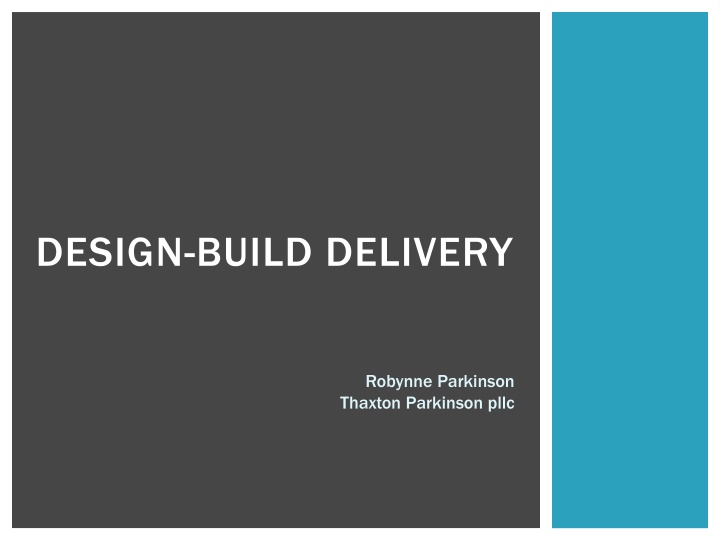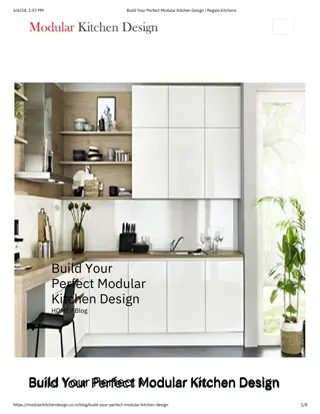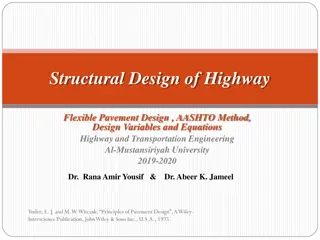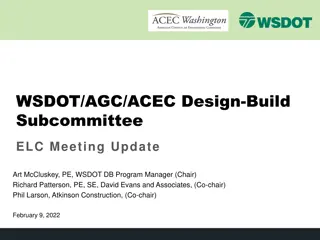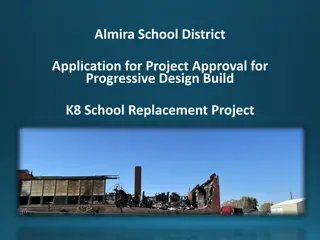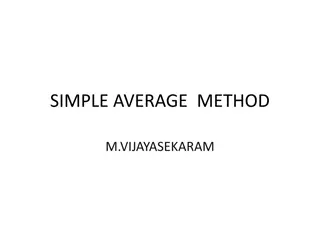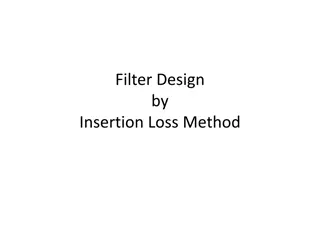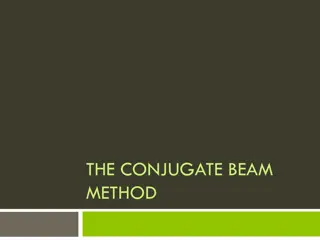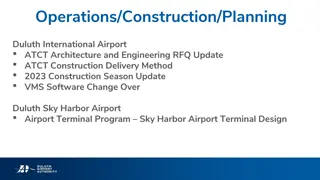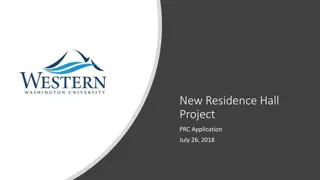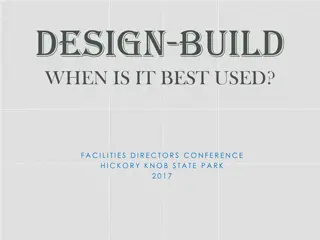Innovative Insights into Design-Build Delivery Method
Explore the various aspects of design-build projects, including traditional methods, liability considerations, basic structures, benefits, market penetration, and success in specific sectors like water/wastewater projects. Gain valuable insights from surveys and studies showcasing the effectiveness and advantages of the design-build approach in construction projects.
Download Presentation

Please find below an Image/Link to download the presentation.
The content on the website is provided AS IS for your information and personal use only. It may not be sold, licensed, or shared on other websites without obtaining consent from the author.If you encounter any issues during the download, it is possible that the publisher has removed the file from their server.
You are allowed to download the files provided on this website for personal or commercial use, subject to the condition that they are used lawfully. All files are the property of their respective owners.
The content on the website is provided AS IS for your information and personal use only. It may not be sold, licensed, or shared on other websites without obtaining consent from the author.
E N D
Presentation Transcript
DESIGN-BUILD DELIVERY Robynne Parkinson Thaxton Parkinson pllc
TRADITIONAL DESIGN-BID-BUILD PROJECT Owner Contractor Architect Trade Subs Trade Subs Trade Subs 2
LIABILITY GAP IN DESIGN-BID-BUILD Warranty Strict Liability Warranty Professional Negligence Professional Negligence The Liability Gap OWNER Strict Liability GEOTECH DESIGNER CONSTRUCTOR SUBCONTRACTORS SUBCONSULTANTS 3
DESIGN-BUILD BASIC STRUCTURE Design-Build Consultant Owner Design-Builder Professional Subconsultants Trade Design-Build Subcontractors Suppliers Subcontractors 4
BENEFITS OF DESIGN-BUILD Performance warranty from design-build team. Insures project quality Ability to select team based on qualifications rather than price. Faster delivery. Fewer claims. Able to fully utilize most advanced design and construction techniques. BIM Lean Construction Knowledge and guarantee of project cost earlier than any other delivery model.
2012 MUNICIPAL OWNERS SATISFACTION SURVEY OF WATER DESIGN-BUILD PROJECTS SOURCE: WATER DESIGN-BUILD COUNCIL; USED WITH PERMISSION 155 Responses from 15 States Asked about use of and satisfaction with Design-Build and CMAR 42% of survey respondents used progressive design-build 91% state that they will use alternative procurement again. 89% state that the use of innovative ideas in alternative procurement saves money and time and improves quality.
SUCCESS IN WATER/WASTEWATER PROJECTS SOURCE: WDBC/HASKELL CONSTRUCTION USED WITH PERMISSION
FEDERAL HIGHWAY ADMINISTRATION 2006 DESIGN-BUILD EFFECTIVENESS STUDY 14% shorter duration 3% cost savings No change in quality Significantly lower cost and fewer claims for design- build projects reflect a fundamental shift in transportation construction contracting. The less adversarial atmosphere bodes well for this procurement method, particularly for high visibility projects where cooperation between project owners and their design and construction contractors is essential to project success.
DESIGN-BUILD IN WASHINGTON Approval by the Washington State Project Review Committee Public body must show: Public body has personnel or consultants who are experienced in the delivery method Public body has an achievable plan for the project Project is over $10 million or is a pilot project between $2 and $10 million Project meets the statutory requirements for design-build The construction activities are highly specialized and a design-build approach is critical in developing the construction methodology; or The projects selected provide opportunity for greater innovation or efficiencies between the designer and the builder; or Significant savings in project delivery time would be realized.
TYPES OF DESIGN-BUILD Bridging Documents Design Competition Progressive Design-Build
BRIDGING DOCUMENTS Owner develops design to approximately 30% Design-Builder relies on the design for the purposes of pricing Owner selects based on experience and price Benefits Price established at procurement Owner involved in the design throughout the project Detriments Longer time to prepare procurement Owner is responsible for the cost if the bridging documents do not accomplish the performance requirements Design-Builder restricted on innovation Most expensive for the Owner
MANAGING RISK: BRIDGING Owner selects competent bridging designer Validation Period: Thorough review of bridging documents to verify that documents are sufficient to build project Owner reserves contingency to manage changes at the conclusion of the validation period Priced using both Guaranteed Maximum Price (GMP) and Lump Sum Design-Builders include contingency in price and fee to account for risk in estimating the project early
DESIGN COMPETITION Owner puts together performance requirements for the project Shortlisted Finalists (usually 3) provide designs to schematics and cost Owner selects based on experience, design ideas and price Benefits Price established at procurement Owner gets to select between several different design ideas Detriments Most expensive for design-build teams, particularly designers Less competition Owner not involved in the design until after schematics
MANAGING RISK: DESIGN COMPETITION Owner selects Design-Build teams who are experienced in design competitions Requires heavy early collaboration and experience in conceptual estimating Most risk to Design-Builder Design-Builders put contingency in both the price and fee to account for the potential that the designers miss elements of the design and for estimating the price early Priced using Guaranteed Maximum Price (GMP) Incentivize Design-Builders to come in under GMP Savings Performance
PROGRESSIVE DESIGN-BUILD Owner issues program describing the performance characteristics of the project There is no design at the procurement stage Owner selects based on experience, management plan and price element (usually fee) Benefits: Fastest procurement and least expensive method because no designs required from Design-Builder or Owner Owner has input in the design throughout the project Design-Builder has more responsibility for the design Detriments: Price not established until after procurement
PROGRESSIVE DESIGN-BUILD: MANAGING RISK Validation/Proposal Development Period Subject to a guaranteed Not To Exceed amount Design-Builder verifies Owner provided information Design-Builder and Owner collaborate to develop final scope Deliverables From Design-Builder: Contract Price and Schedule Final Scope Contract Amendment with commercial terms
PROGRESSIVE DESIGN-BUILD: MANAGING RISK Contract Execution Period Design-Builder completes design and constructs the project Design-Builder must meet the schedule and price The Owner s engineer will oversee testing
CONTRACT PROTECTIONS Design-Builder will always be subject to a Not to Exceed ceiling. Design-Builder will be required to provide designs consistent with the agreed project scope and budgets. Design-Builder provides robust financial and project information, including weekly updates on budget and schedule. With a GMP, the Owner has the right to audit the Design- Builder s books. The Design-Builder collaborates with the Owner to determine final scope, schedule and cost. The Owner incentivizes the Design-Builder to manage performance.
DESIGN EXCELLENCE DBIA Definition: Memorable design solutions that exceed the Owner s vision and defined functional requirements, include state of the art structures and facilities that are high performance and sustainable, and possess a holistic awareness that considers context, site and the environment.
Merage School of Business University of California, Irvine Benjamin P. Grogan and Jerry L. Dove Federal Building Miramar, FL
Denver Union Station Transit Improvements John James Audubon Bridge New Roads, LA
THAXTON PARKINSON PLLC THAXTON PARKINSON PLLC Robynne Parkinson Robynne Parkinson is a Seattle based lawyer and a leading expert in construction law and alternative procurement both in Washington State and on a national basis. She served on the National Design Build Institute of America Board of Directors from 2010 2017 and currently serves on the American Arbitration Association National Construction Dispute Resolution Committee. In addition, she is the vice chair of the DBIA National Education Committee, is a past chair of the DBIA National Legal and Legislation Committee and is instrumental in revising the DBIA form Design-Build contracts and subcontracts. She served as the President of the Northwest Region for DBIA from 2008 to 2010 and continues on its Board of Directors. Robynne is AV rated by Martindale-Hubble, and named as a Washington Super Lawyer in 2010-2017. Robynne received her undergraduate degree from the University of Texas at Austin and her law degree from the University of Colorado, Boulder School of Law. 9311 SE 36 9311 SE 36th th St., Suite 103 Mercer Island, Washington 98040 Mercer Island, Washington 98040 (206)909 (206)909- -5290 www.rtp www.rtp- -law.com www.designbuildlaw.blogspot.com www.designbuildlaw.blogspot.com e e- -mail: rparkinson@rtp mail: rparkinson@rtp- - law.com.com law.com.com St., Suite 103 Robynne has represented public owners on a number of design-build projects, and her clients include the Port of Seattle, Los Angeles County, the State of Hawaii, and the Cities of Tacoma, Spokane, Richland, Airway Heights, and Liberty Lake. 5290 law.com
